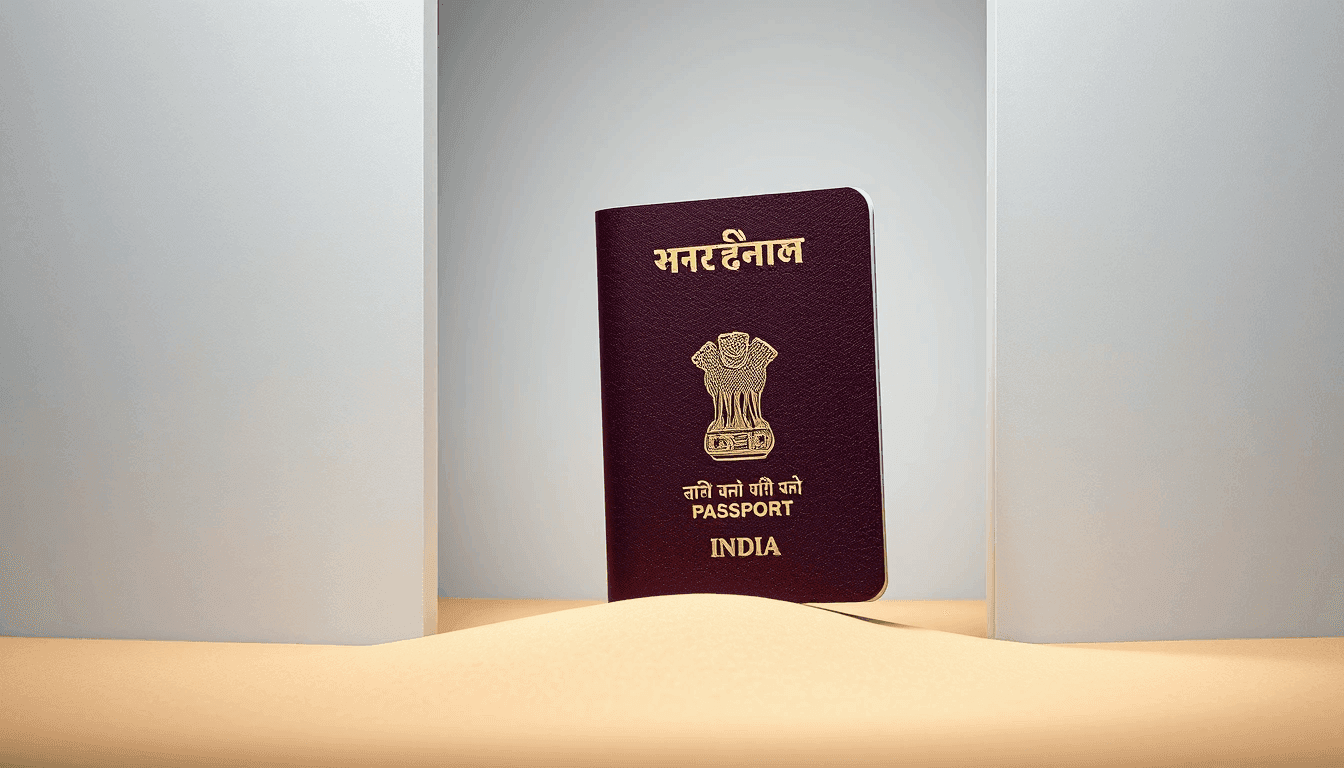

Navigating the waters of international bureaucracy can feel like a maze, especially when it concerns your child's future. If you're an Indian parent whose child was born in the UAE and you're considering their citizenship status, you've likely come across the term "renunciation certificate." This guide is here to demystify the process, offering clear, actionable advice from someone who understands the journey.
Let's get straight to it: India does not permit dual citizenship for its adult citizens. While a child born abroad to Indian parents may automatically acquire Indian citizenship by descent, if that child also acquires or intends to acquire foreign citizenship (which is often a prerequisite for an Overseas Citizen of India (OCI) card), they must first formally renounce their Indian citizenship. This renunciation is crucial for them to fully embrace their new foreign nationality and apply for OCI status, allowing them certain privileges in India without being a full citizen.
Why Renunciation? Understanding India's Citizenship Laws
As an Indian citizen, you might be wondering why your child, born and raised in the UAE, needs to renounce their Indian citizenship. Here's the core reason:
- No Dual Citizenship for Adults: The Indian Constitution does not allow adult Indian citizens to simultaneously hold citizenship of another country. While a child might technically hold dual citizenship at birth if born in a country that grants it (like the USA or Canada), or if they acquire another citizenship through their parents, they must choose one upon reaching adulthood or when applying for certain Indian services like OCI.
- The OCI Connection: The most common reason Indian parents in the UAE initiate this process is to enable their child to apply for an OCI card. An OCI card provides lifelong visa-free travel to India, allows for certain economic, financial, and educational benefits, but critically, it can only be issued to a person who is not a citizen of India. Therefore, renouncing Indian citizenship is the essential first step.
- Formalizing Foreign Citizenship: If your child has acquired, or is in the process of acquiring, foreign citizenship (e.g., through one parent's other nationality, or if you've moved to a country that grants citizenship by birth), renouncing their Indian citizenship formally recognizes their new status in the eyes of the Indian government.
Important Note: The UAE does not grant citizenship by birth. So, if your child was born in the UAE to Indian parents, they are primarily an Indian citizen by descent. The need for renunciation typically arises when they acquire another foreign citizenship (not UAE citizenship, unless specifically granted) that makes them ineligible to hold Indian citizenship concurrently.
Key Prerequisites Before You Start
Before you even think about filling out forms, ensure you meet these foundational requirements. Missing any of these will lead to delays.
- Child Must Possess Foreign Citizenship: This is non-negotiable. Your child must already be a citizen of another country and have a valid foreign passport. The renunciation process is for giving up Indian citizenship because they have acquired another.
- Child's Valid Indian Passport: Your child must have an existing, valid Indian passport. This passport will be surrendered and cancelled as part of the renunciation process.
- Required Documents: Gather all originals and multiple photocopies of the following:
- Child's Indian Passport: Original and photocopies (first and last pages, and any observation pages).
- Child's Foreign Passport: Original and photocopies (main bio-data page).
- Child's Birth Certificate: Original and photocopies.
- Parents' Indian Passports: Originals and photocopies (first and last pages, and any observation pages).
- Parents' Marriage Certificate: Original and photocopies.
- Child's and Parents' UAE Residency Visas: Original and photocopies.
- Proof of Address in UAE: Utility bill, tenancy contract, etc.
- Passport-sized Photographs: Specific dimensions (usually 2x2 inches or 51x51 mm) with a white background. Check the exact specifications on the VFS Global website.
- Annexure 'D' or Affidavit: A declaration by parents affirming the child's acquisition of foreign citizenship and the intention to renounce Indian citizenship. This is usually available on the Consulate General of India, Dubai or Indian Embassy Abu Dhabi website, or provided by VFS Global.
- Application Form (Form XXII): The online application form, printed and signed.
Pro Tip: Always have at least two sets of photocopies for everything. Sometimes, they ask for extra, or you might make a mistake on one.
The Renunciation Process: A Step-by-Step Guide
The process for renouncing Indian citizenship for your child in the UAE is primarily handled through VFS Global, the official outsourced agency for consular services of India.
Step 1: Complete the Online Application (Form XXII)
- Access the Portal: Go to the official Indian Passport Seva portal (www.passportindia.gov.in).
- Select "Renunciation of Indian Citizenship": Look for the relevant section, typically under "Consular Services" or "Citizenship Services."
- Fill
Form XXII: This is the primary application form for renunciation.- Be extremely careful and accurate when filling out every detail. Any mismatch with your documents can lead to rejection and delays.
- Provide all details of your child's Indian passport and the newly acquired foreign passport.
- Upload the required documents (scanned copies) as prompted.
- Once completed, submit the form online.
- Print and Sign: Print out the completed
Form XXII. Ensure all required signatures (of both parents, and thumb impression/signature of child if applicable and old enough) are present. Paste the child's passport-sized photograph in the designated box.
Practical Insight: Don't rush this step. It's the foundation of your application. Many rejections happen due to errors here.
Step 2: Prepare Your Physical Document Pack
Organize all the original documents and their photocopies as per the checklist in the "Prerequisites" section. Arrange them in the order specified by VFS Global (usually detailed on their website for the specific service). This makes the submission process smoother.
Step 3: Schedule Your VFS Global Appointment
- Visit VFS Global Website: Go to the VFS Global website specific to India consular services in the UAE (e.g., VFS Global UAE for India).
- Book an Appointment: Select "Renunciation of Indian Citizenship" or "Surrender of Indian Passport" service and book an appointment at your nearest VFS Global center (Dubai or Abu Dhabi, depending on your residency).
- Print Confirmation: Print your appointment confirmation slip. You'll need it to enter the VFS center.
Tip: Appointments can fill up quickly, especially during peak seasons. Book well in advance.
Step 4: The VFS Global Submission
This is where you physically submit your application.
- Arrive Early: Reach the VFS Global center at least 15-30 minutes before your scheduled appointment.
- Bring Everything: Carry your complete document pack (originals and copies), the printed
Form XXII, and your appointment confirmation. - Verification and Submission: A VFS Global representative will review your documents. They will check for completeness and accuracy against the originals. Be prepared for them to ask questions or point out discrepancies.
- Pay Fees: You will pay the application fee and the VFS Global service charge. Fees are non-refundable. Check the exact current fees on the VFS Global website beforehand.
- Biometrics (if applicable): For renunciation, biometrics are generally not required for young children, but follow any instructions given at the center.
- Receive Receipt: Once submitted, you will receive a receipt with a tracking number. Keep this safe!
Challenge Alert: Incomplete documentation is the biggest reason for rejection at this stage. Double-check everything before you leave home.
Step 5: Tracking Your Application
You can track the status of your application online using the reference number provided on your VFS Global receipt. The status updates will let you know if your application is being processed, if additional documents are required, or when it's ready for collection.
Realistic Expectation: Processing times can vary. While VFS Global might quote a specific timeframe, it's wise to expect anywhere from 3-6 weeks, or even longer, especially if there are any issues or during busy periods. Patience is key.
Step 6: Receiving the Renunciation Certificate
Once your application is processed and approved, your child's renunciation certificate will be issued.
- Collection Notification: You'll receive an SMS or email notification when the certificate is ready for collection.
- Collect Documents: Return to the VFS Global center (or opt for courier service if available and chosen during submission) to collect the Renunciation Certificate and the cancelled Indian passport. The Indian passport will be stamped "Cancelled" or "Surrendered" and returned to you.
What it looks like: The renunciation certificate is an official document from the Government of India, confirming that your child has ceased to be an Indian citizen. This is a vital document, so keep it safe with other important papers.
Important Considerations & Practical Tips
- When to Apply: Apply for renunciation as soon as your child has obtained their foreign passport. Do not delay, especially if you plan to apply for OCI soon after.
- Fees: Be prepared for the costs. There's usually a government fee for renunciation and a separate service fee for VFS Global. These fees are subject to change, so always check the latest on the VFS Global website.
- No Dual Citizenship (Again!): It's worth repeating: once your child receives the Renunciation Certificate, they are no longer an Indian citizen. They cannot hold an Indian passport simultaneously with their foreign passport.
- Indian Passport Cancellation: The child's Indian passport will be physically cancelled (usually by punching holes or stamping "CANCELLED") and returned to you along with the renunciation certificate.
- Always Check Official Websites: Government and outsourced agency websites are the most reliable sources for the latest forms, fees, and requirements. Changes can happen without much notice.
What Happens After Renunciation?
Once you have the renunciation certificate in hand, your child is formally no longer an Indian citizen. This opens the door for the next crucial step:
- Applying for OCI: With the renunciation certificate and the child's foreign passport, you can now proceed to apply for an Overseas Citizen of India (OCI) card for your child. This is a separate application process, also typically handled through VFS Global.
- Travel to India: Your child will now travel to India using their foreign passport and, once obtained, their OCI card.
Frequently Asked Questions (FAQs)
Q: Can my child hold both Indian and foreign passports? A: No. India does not allow dual citizenship for adults. Once Indian citizenship is renounced, the child can no longer hold an Indian passport.
Q: Do I need to surrender my child's Indian passport? A: Yes, the Indian passport must be surrendered as part of the renunciation process. It will be cancelled and returned to you.
Q: What if my child never had an Indian passport, but was born to Indian parents? A: Even if your child never applied for an Indian passport, they are still considered an Indian citizen by descent if born to Indian parents. If they acquire foreign citizenship, they still need to go through the renunciation process to formally give up their Indian citizenship and obtain the certificate.
Q: How long is the renunciation certificate valid? A: The renunciation certificate is a permanent document confirming the cessation of Indian citizenship. It does not expire.
Q: Can my child regain Indian citizenship later in life? A: Yes, it is possible for a person to regain Indian citizenship, but it is a separate and often complex process that involves specific eligibility criteria and an application for re-acquisition of Indian citizenship.
Next Steps
Congratulations on successfully navigating the renunciation process! Your child is now officially a foreign citizen. Your primary next step will likely be to:
- Apply for their Overseas Citizen of India (OCI) card. This will allow them to maintain a strong connection with India without being an Indian citizen.
Keep the renunciation certificate safe with other vital documents. It's a testament to your child's evolving identity and an important part of their legal history.

About Harleen Kaur Bawa
Harleen Kaur Bawa is a licensed immigration attorney specializing in Canadian immigration and Indian services. With extensive experience in family sponsorship, Express Entry, refugee claims, and OCI services, she has successfully helped hundreds of clients navigate complex immigration processes.
Harleen holds degrees from York University - Osgoode Hall Law School and the University of Toronto, and is certified by the Law Society of Ontario and the Immigration Consultants of Canada Regulatory Council. She is committed to providing personalized, professional legal services to help clients achieve their immigration goals.
Related Articles

Renewing Your Indian Passport in UAE Without the Old Passport: A Practical Guide
Lost, stolen, or damaged Indian passport in UAE? Get the essential guide to re-issue. Understand police reports, documents, fees, and timelines for a smooth process.

Your Guide to Child Birth Registration at the Indian Embassy Dubai: A Step-by-Step Process
Simplify newborn Indian passport & birth registration in Dubai for expats. Our guide helps Indian parents navigate documents & avoid pitfalls efficiently.

Fixing OCI Application Photo and Signature Upload Errors in the UAE: Your Practical Guide
Applying for OCI from UAE? Fix common photo & signature upload errors like dimensions, file size & background. Get precise steps to ensure your application isn't rejected.